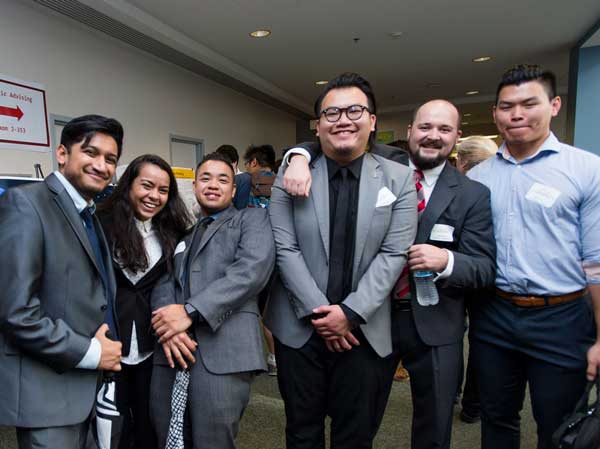
Intersection Safety
MARIETTA, Ga. | Jan 9, 2018

Could a traffic agency identify a potentially dangerous road intersection without first witnessing a collision?
Three Kennesaw State University researchers and the Georgia Department of Transportation (GDOT) are attempting to answer that question as they near completion on a two-year proof-of-concept study to develop an image-based system for monitoring and assessing the safety of intersections.
The project, which began in January 2015 and is supported by $180,000 grant from GDOT, is led by Jidong Yang, assistant professor of civil engineering and director of Kennesaw State’s Georgia Pavement and Traffic Research Center; Ying Wang, associate professor of mechatronics engineering; and Chih-Cheng Hung, professor of computer science. Together, they’re developing a software package that uses cameras currently installed at major intersections to extract traffic data in real-time. The data is then logged in a cloud-based database, which can then be used to help GDOT detect, analyze and correct any potential issues that could lead to vehicle accidents.
The software application would supplement or replace the traditional practice of using historical crash data. Given that wrecks are rare events, Yang said the old method is somewhat ineffective, leaving potentially dangerous intersections to go unnoticed until a significant number of wrecks have happened.
“When improving the safety at that location, you can’t wait for an accident to occur. It’s too late,” Yang said, adding that GDOT is taking a more proactive approach by developing a method to monitor intersections before accidents occur.

“We’re trying to build certain artificial intelligence behind the cameras that can look at the images the same way a human can,” he said. “From those images, we’ll be able to extract and process conflict information automatically. We cannot afford to have people watching video 24 hours a day. We have to somehow automate the process.”
Currently, the researchers are in the process of testing their algorithms. Deep learning, an approach that gives computer programs a degree of intelligence, will allow the application to identify road users, such as vehicles, entering the intersection and track their positions and trajectory through the camera.
The program uses the trajectories extracted from live video to determine the direction and speed of the vehicles as they approach one another, and then determines the risk or probability of a collision.
Over time, the application will log conflicts with a time stamp and information pertaining to the risk of collision.
The proposed system will allow GDOT to react in a proactive manner to correct issues, whether it’s by realigning roadways for improved line of sight, adjusting speed limits for better compliance or by adding additional turn lanes. There may also be room to improve signal timing or to install extra signage or pavement markings for increased visibility.
“It is a totally new way for them to get this knowledge, and it could save many lives,” Wang said.
Written by Travis Highfield
Photography by David Caselli and Rob Witzel


















